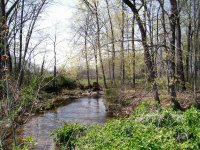My concerns about scrapbooks
In 1995, as my parents' golden wedding anniversary approached, they decided that they should organize their photos. So Mama and Daddy spent many hours, looking through their photos and newspaper clippings and arranging many of them in chronological order. They taped (yes, taped!) them into scrapbooks, and for a few of the photos, they wrote captions. They enjoyed making the scrapbooks, and they enjoyed showing them to the friends and family who gathered to celebrate their 50th anniversary.
My parents have both been gone for over a dozen years, but my brother, my sister, and I haven't divided the family pictures yet. I hope that day will come eventually, but for now, I'm scanning photos from a couple of scrapbooks that I brought home from my brother's house last fall.
The scrapbooks and the taped-down photos are a bit of a problem. I can't remove the photos from the pages for scanning, so I opened the hinges of one of the scrapbooks and took out the pages. I have to make two scans for each side of each page. Then it takes a fair amount of time with image processing software to crop the individual photos, straighten them, and save them. I have an older Canon scanner. It works well, but it doesn't do many things automatically.
The worst problem is that we can't divide the photos in the scrapbooks without destroying the scrapbooks. For example, it would be nice if I could have some of the photos in which I appear -- the original photos, not just scans of them. Pictures of me as a child won't mean much to my five nephews and their descendants, whereas my own children and grandchildren might value them. Is that more important than keeping the photos in the scrapbooks that my mother and father created?
The photographs probably should be cut loose from the pages, whether or not we ever get them divided among the three of us. I am very sure the scrapbook pages are not made of acid-free paper.
Scanning these photos has made me wonder about the scrapbooks that many hobbyists enjoy creating today. How will their children share the family photos and memorabilia that are embedded in fancy scrapbook pages? No one will want to ruin the pages, so one person will inherit each book and its contents. I hope that the scrapbook crafters are saving duplicates of the photos or creating similar scrapbooks for each child.
People like to decorate their scrapbook pages with embellishments that they purchase at scrapbooking shops. Little doodads of any thickness would be a problem on my scanner. If a page doesn't lie flat, I don't get a well-focused scan. I'm glad my parents' scrapbook pages are not lumpy!
I think I'll try to write some information on the backs of my own photographs, instead of putting them in scrapbooks. If the kids want them organized chronologically, they can do it themselves.









